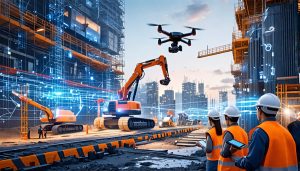
Revolutionizing Construction with 3D BIM Modeling: What You Need to Know
Leverage 3D BIM modeling to streamline construction processes by integrating design, engineering, and manufacturing data into a unified digital platform. Enhance collaboration and communication across project teams, from architects to project managers, ensuring that everyone accesses the most up-to-date and accurate information. Implement regular 3D model updates to maintain accuracy and foresee potential clashes, improving project efficiency and reducing errors. Employ this approach to facilitate the “digital transformation” in your construction projects, embracing innovative technologies that drive the industry forward. …









